1. The Vegetarian Turned Carnivore

Most bees are devoted vegetarians, happily sipping nectar and spreading pollen. But not the vulture bee. Somewhere along the evolutionary line, it took a hard left turn and decided that dead animals were the way to go. Unlike their flower-loving cousins, these bees have special gut bacteria that allow them to digest raw flesh—bacteria strikingly similar to what you’d find in actual vultures. It’s like Mother Nature looked at bees and thought, You know what would be fun? A flesh-eating version. As unsettling as this transformation sounds, it’s a testament to nature’s ability to reshape life in the strangest ways. If survival means trading nectar for necrosis, the vulture bee is more than happy to comply.
This drastic dietary shift has led to physical adaptations as well. Vulture bees have sleeker bodies with fewer hairs since they don’t need to carry pollen. Their digestive tracts have also evolved to process meat efficiently, allowing them to extract nutrients from decomposing flesh. Unlike their honeybee relatives, who rely on bright blooms to thrive, vulture bees find their sustenance in the shadows of death. It’s almost poetic—if poetry could smell like roadkill and decay. Yet, for them, the ability to turn rotting flesh into food isn’t a grotesque horror—it’s a survival superpower.
2. The Gruesome Dining Etiquette

When vulture bees find a fresh corpse, they don’t just nibble politely. They get to work like tiny winged butchers, using their powerful mandibles to strip away chunks of meat. But here’s the kicker—they don’t actually eat it. Instead, they store the flesh in a special pouch and mix it with digestive enzymes. This breaks it down into a paste, which they then regurgitate back at the hive. If that sounds gross, just wait—because the real horror show is what happens next. The flesh, now partially digested, takes on an entirely new form that is crucial to the hive’s survival.
Their method of food processing is eerily similar to how honeybees handle nectar. Just as nectar is transformed into honey through regurgitation and enzymatic reactions, so too is rotting flesh in a vulture bee colony. The resulting substance is stored in wax cells, ensuring that the entire colony has access to a steady food supply. This meat-honey hybrid may sound like nightmare fuel, but for vulture bees, it’s the key to their success. They don’t just scavenge; they repurpose decay into something life-sustaining. It’s both revolting and brilliant—a perfect example of nature’s twisted ingenuity.
3. Rotting Meat Turned “Honey”
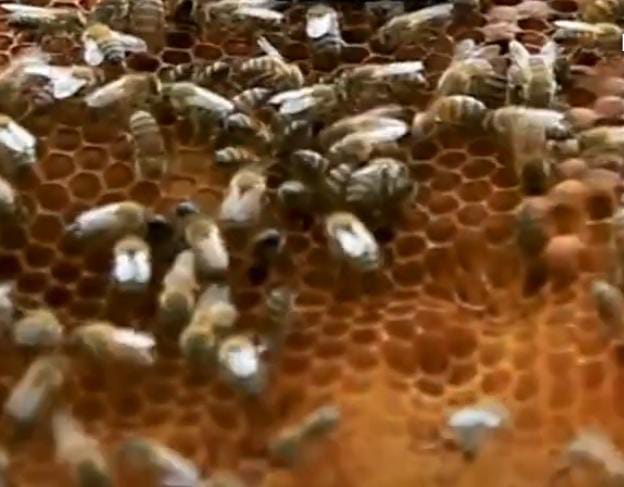
What do you get when you process decayed flesh in a bee’s gut and let it sit? Something terrifyingly close to honey. The meat slurry ferments in the hive, transforming into a substance eerily similar to the golden sweetness we drizzle on toast. And yes—if you’re wondering—people have tasted it. According to those brave (or reckless) enough to try, it’s surprisingly edible. But don’t expect it to show up in your local grocery store anytime soon. The thought of spreading “meat honey” on a biscuit is enough to make even the most adventurous foodies hesitate.
Despite its off-putting origins, this substance plays the same role as traditional honey in the hive. It provides a stable, nutrient-rich food source that ensures the colony’s survival. While regular honeybees rely on flowers to produce their sweet reserves, vulture bees have found a way to thrive in environments where nectar is scarce. It’s a bizarre adaptation that challenges our very definition of what honey should be. Who knew the line between nature’s sweetness and horror could be so thin?
4. No Pollen? No Problem
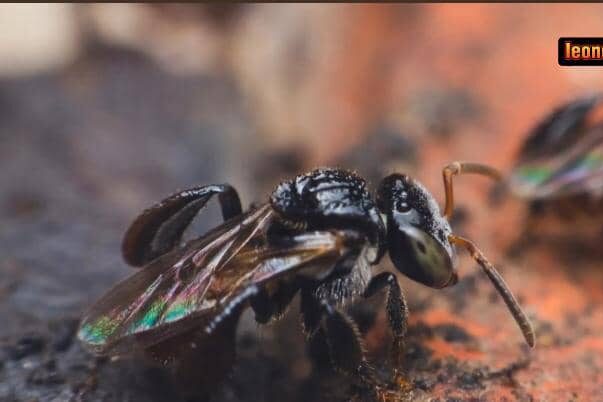
Unlike their pollen-collecting relatives, vulture bees couldn’t care less about flowers. Their specialized bodies lack the fuzzy hairs that normal bees use to gather pollen, because—why bother? Instead, their entire foraging strategy revolves around scouting out the freshest roadkill buffet. This makes them incredibly efficient scavengers, often competing with ants and maggots for first dibs on a meal. It’s the circle of life—just with a lot more mandibles and regurgitation. The fact that they can survive without traditional floral resources makes them unique among bees.
Their independence from flowers has allowed them to carve out an ecological niche unlike any other. While most bees play a role in pollination, vulture bees are nature’s cleanup crew, ensuring that decaying matter doesn’t go to waste. In an ironic twist, their existence helps balance ecosystems in a way that typical bees do not. They may not be fluttering from petal to petal, but they’re just as vital to the natural order. Who would have thought that something so seemingly grotesque could be so important?
5. A Taste for the Macabre
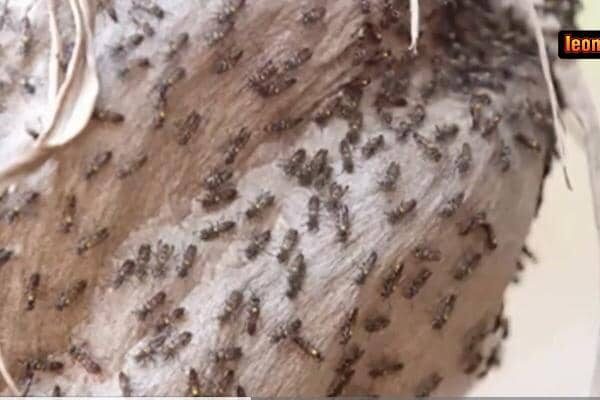
Vulture bees don’t just stumble upon carcasses—they actively seek them out with a hunger that would make horror movie villains proud. Using their keen sense of smell, they can detect the scent of decay from a distance, much like real vultures. The moment they pick up the aroma of death, they swarm in like tiny airborne ghouls, ready to feast. But they’re not alone in their morbid buffet. Other scavengers, from maggots to bacteria, are all racing against time to claim the prize. It’s a grim competition where the fastest—and most efficient—feeder wins.
Despite the grotesque nature of their diet, vulture bees play a surprisingly crucial role in their ecosystem. By breaking down decomposing animals, they help speed up the recycling of organic matter, preventing the spread of disease. Their efficiency rivals that of larger scavengers, proving that even in the insect world, the smallest creatures can have an outsized impact. It’s strange to think that these tiny, meat-loving bees are nature’s unsung decomposers. If there were an award for “Most Unexpectedly Useful Carnivore,” vulture bees would be strong contenders.
6. The Hive of Horrors
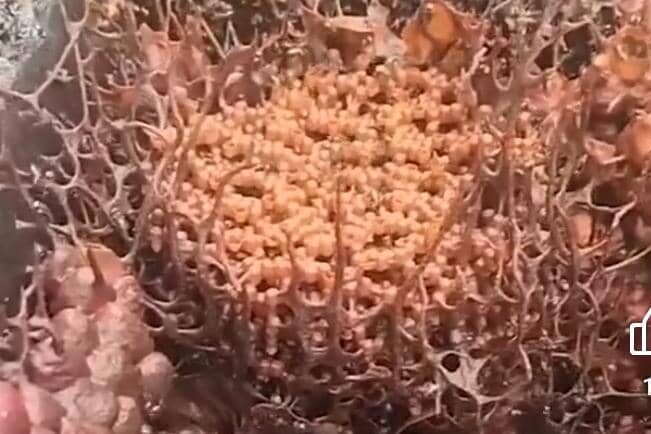
Step inside a vulture bee hive, and you won’t find the neatly structured hexagonal honeycombs of a typical bee colony. Instead, these hives are home to an eerie, almost alien-like setup where rotting flesh has replaced floral nectar. The air inside is thick with the pungent scent of decay, and the walls gleam with the fermented remnants of scavenged corpses. It’s a scene that feels more like something out of a gothic horror novel than an insect colony. But for the vulture bees, this macabre environment is simply home.
Despite its unsettling nature, the hive operates with the same level of efficiency as a honeybee colony. Workers process and store the meat-honey, ensuring a constant supply of food, while the queen lays eggs to keep the colony thriving. Every bee has a role, from scouting for the next meal to defending the hive from intruders. It’s a testament to their adaptability—an insect civilization thriving in the shadows of death. If bees had a dark, underground counterpart, vulture bees would be the secret society no one talks about.
7. The Sting of the Flesh-Eater
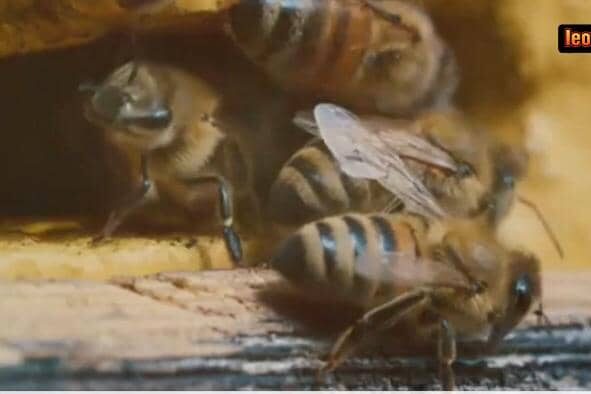
If you’re wondering whether vulture bees are as aggressive as their diet suggests, the answer is both yes and no. Unlike some wasps or hornets, they don’t go out of their way to attack humans—but if provoked, they’re more than capable of defending themselves. And trust me, you do not want to be on the receiving end of their sting. While they don’t have the venomous punch of a bullet ant, their sting is still painful enough to make you rethink your life choices. Given their diet, you have to wonder—does their venom contain hints of the carrion they consume?
Interestingly, despite their carnivorous habits, vulture bees don’t seem to use their sting for hunting. Instead, their primary weapons are their powerful mandibles, which they use to tear into rotting flesh with ease. Their reliance on raw jaw strength over venom makes them unique among bees. It’s almost as if they traded poison for pure, unrelenting bite force. If regular bees are delicate pollinators, vulture bees are their nightmarish, muscle-bound cousins who skipped the flowers and went straight for the meat rack.
8. A Nightmare You Can’t Unsee
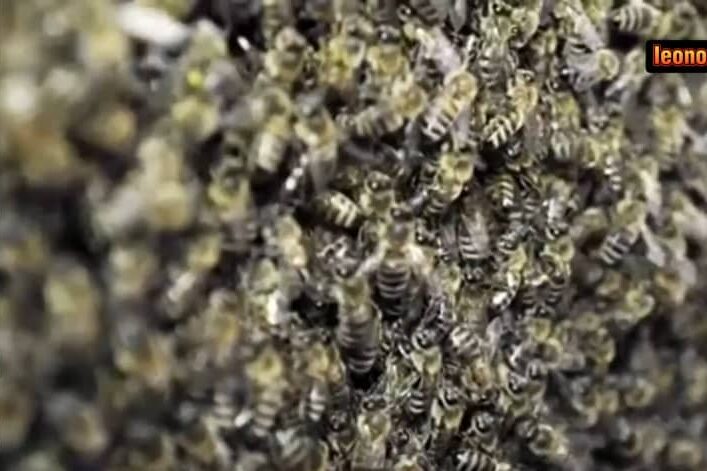
So, what have we learned? Vulture bees are nature’s way of proving that evolution has absolutely no chill. They swapped pollen for putrefaction, nectar for necrosis, and honey for something that sounds like a dare on a reality show. Yet, despite their grotesque dining habits, they play an important role in keeping ecosystems clean. They’re the insect world’s version of crime scene cleanup crews—except their crime scenes are freshly rotting carcasses, and their reward is a meal fit for a… well, them. It’s disgusting, it’s fascinating, and it’s pure, unfiltered nature.
The existence of vulture bees is a reminder that life adapts in the weirdest ways. While most bees are busy saving the world one flower at a time, these little terrors are off in the jungle, proving that survival sometimes demands a… unique approach. Love them or fear them, vulture bees are a testament to the sheer creativity of evolution. And the next time you see a regular honeybee buzzing around a flower, be grateful—it could be much, much worse.


